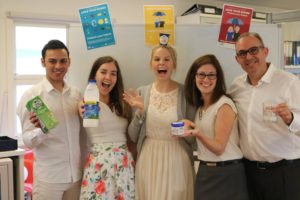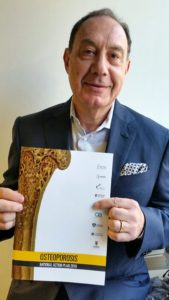Team VIVA! dons white to unite for World Osteoporosis Day
VIVA! Communications practitioners are donning white today – World Osteoporosis Day (October 20, 2016) – to rally for the global prevention, diagnosis and treatment of osteoporosis.

Given an estimated 200 million people worldwide and 1.2 million Australians are living with osteoporosis, and the disease is continuing to place a substantial burden on patients, carers and the healthcare system, a group of nine local bone health stakeholders have united today to release an Osteoporosis National Action Plan designed to tackle this National Health Priority.
The report aims to heighten public awareness of the importance of bone health, to improve the general bone health of the Australian population, and the overall outcomes of those living with osteoporosis. The plan features recommendations for the prevention, treatment, impact and cure of osteoporosis and calls for a national research-related strategy for curing the silent disease.
The bone health stakeholders responsible for the Osteoporosis National Action Plan include Osteoporosis Australia, MOVE muscle, bone & joint health, Australian and New Zealand Bone and Mineral Society, Australian Institute of Musculoskeletal Science, the Garvan Institute of Medical Rsearch, University of Sydney, University of New South Wales and University of Melbourne.
In a media release issued by the bone health stakeholders, CEO of Osteoporosis Australia, Dr Greg Lyubomirsky explained “There is limited awareness of osteoporosis within the community and amongst healthcare professionals.
“The majority of Australians have limited understanding of what osteoporosis is, and 60 per cent do not understand who is most at risk.
“We see the National Action Plan playing a critical role in educating Australians to help make a difference from a preventative and treatment perspective,” Dr Lybormirsky said.

Professor Peter Ebeling AO, Medical Director of Osteoporosis Australia and Head of the Department of Medicine in the School of Clinical Sciences at Monash Health supported Dr Lyubormisky citing “We need to further develop GP engagement programs and systems to enable them to identify patients at risk, including men, and then have them investigated and treated for osteoporosis.”
Osteoporosis occurs when bones lose minerals such as calcium more quickly than the body can replace them. As bones become brittle, they lose strength and are at increased risk of breakage.
Coined the “silent disease”, osteoporosis affects both women and men. Without enhanced education, diagnosis and treatment, Australia will continue to witness an escalation in osteoporotic-related fractures, which ultimately compromise an individual’s mobility, and can result in premature death.
Osteoporosis is diagnosed with a bone mineral density (BMD) test with a dual energy X-ray absorptiometry scan (DXA) measured at the hip and spine, or rarely, the forearm.
To help prevent osteoporosis, men and women should follow a balanced diet including protein, fruit, vegetables, vitamins and minerals such as vitamin D; perform regular physical activity – strength-bearing and weight-bearing exercises to build strength and improve balance to reduce the impact of falls through walking, climbing stairs and lifting weights.
Importantly, it’s also never too late to seek treatment or to prevent further fractures.
If you suspect you’re at risk of osteoporosis, talk to your doctor. For more information, visit Osteoporosis Australia at www.osteoporosis.org.au.
